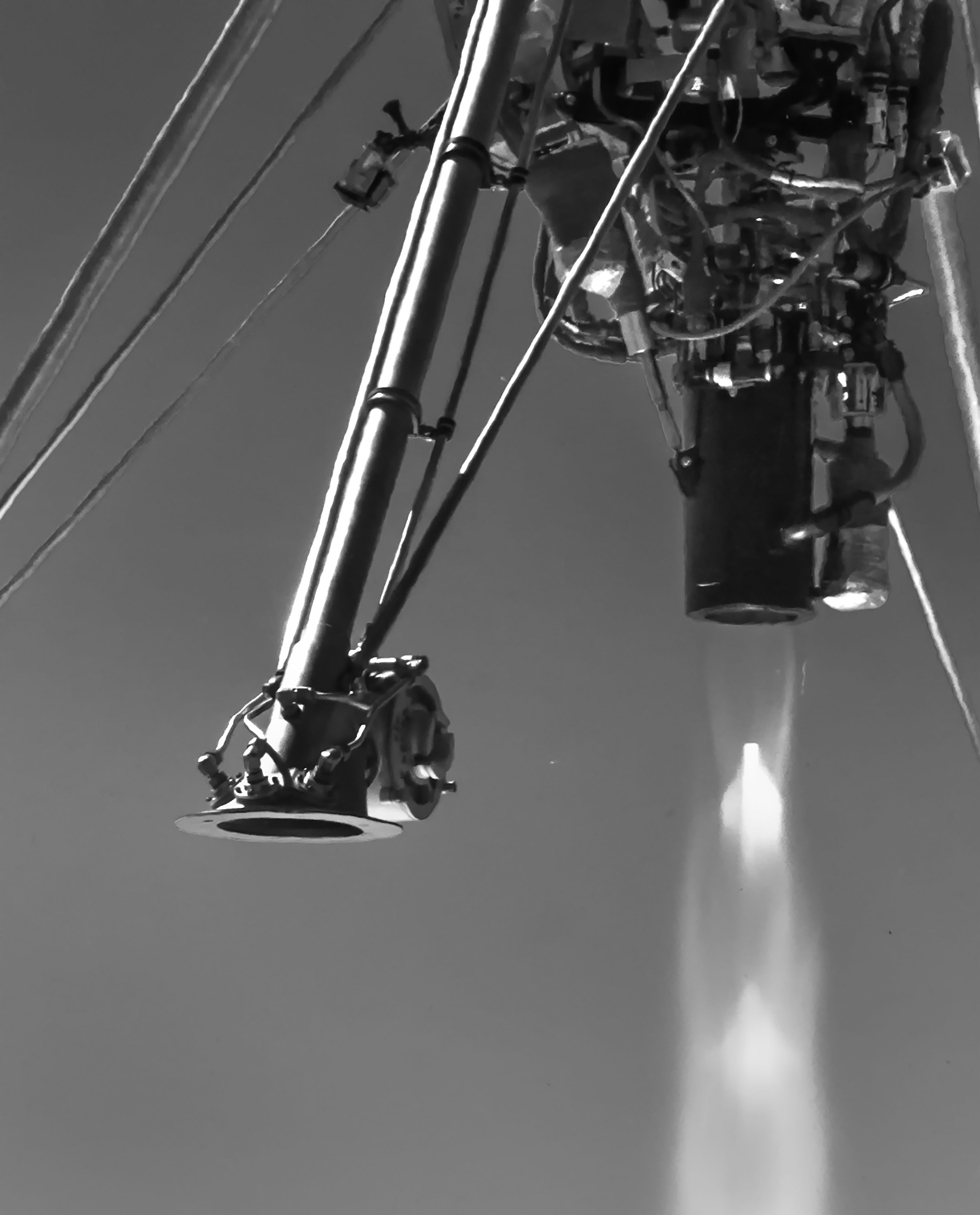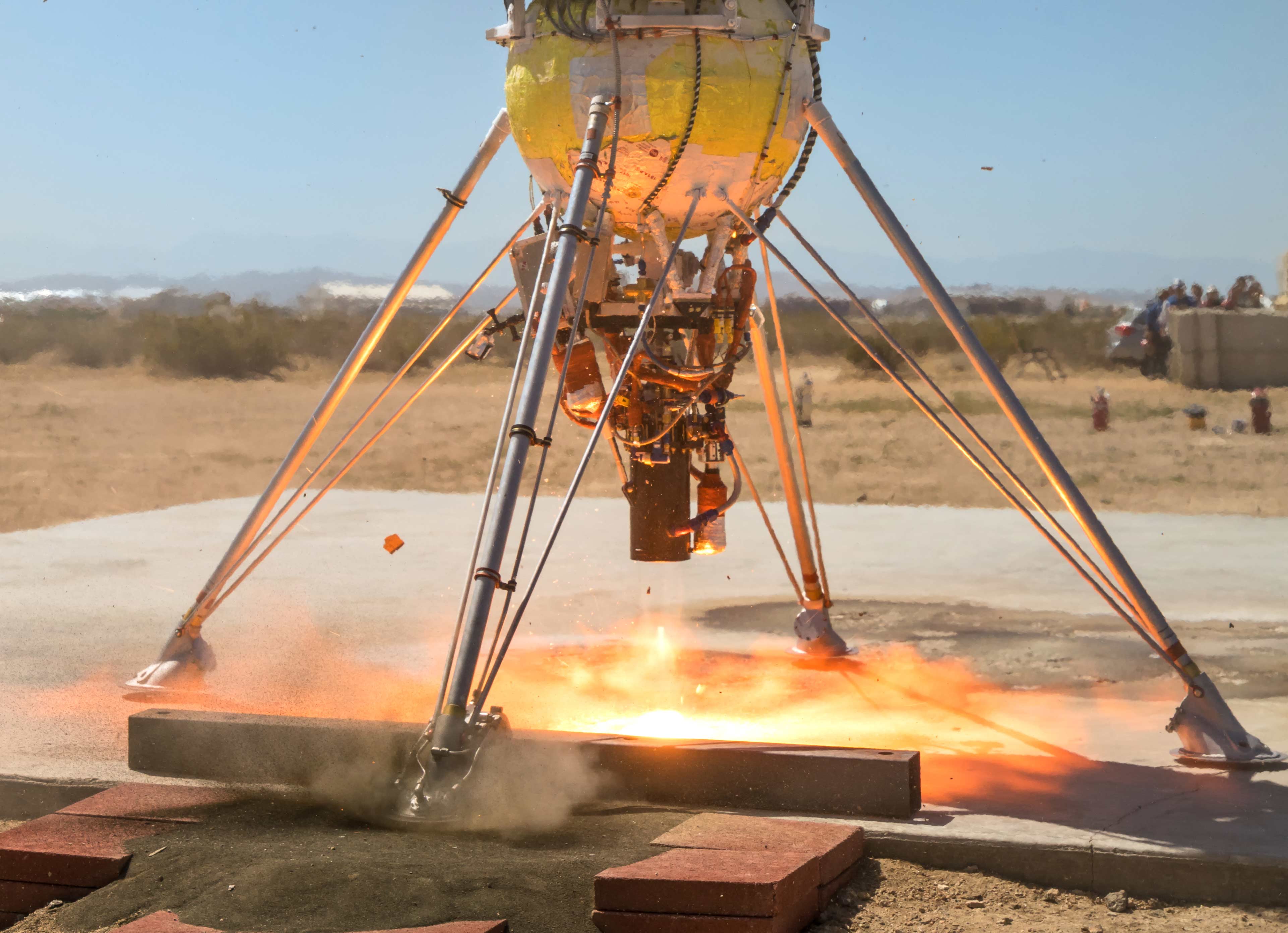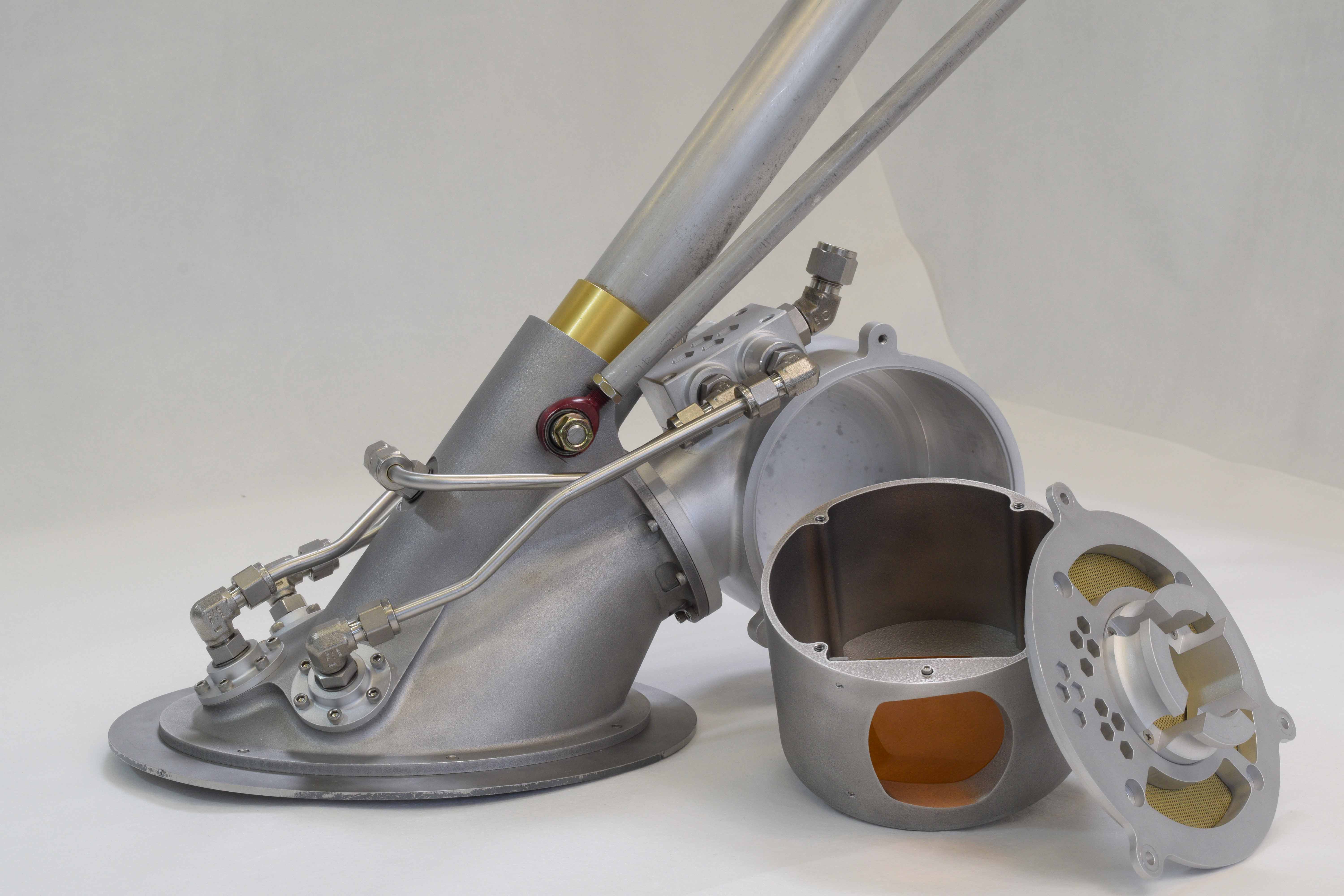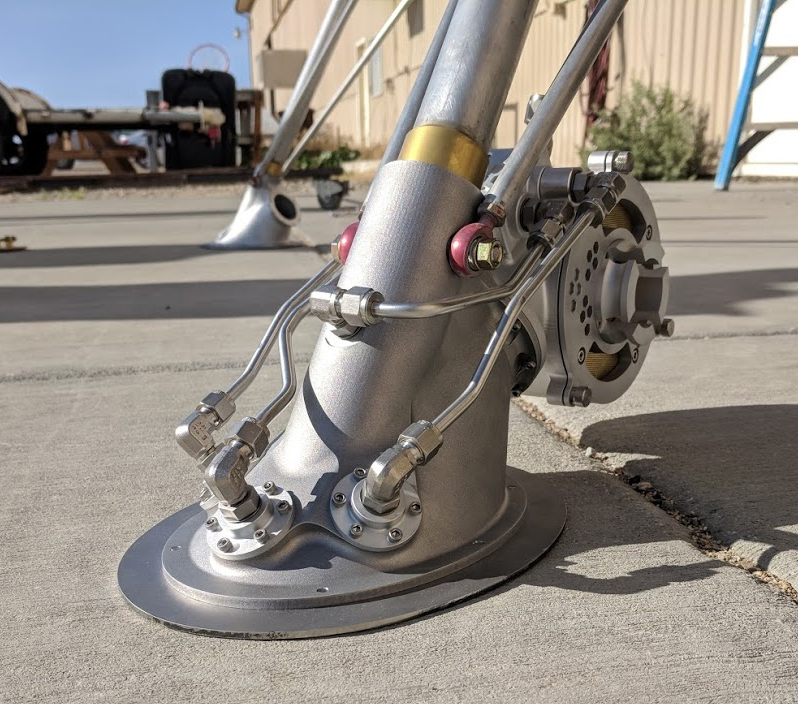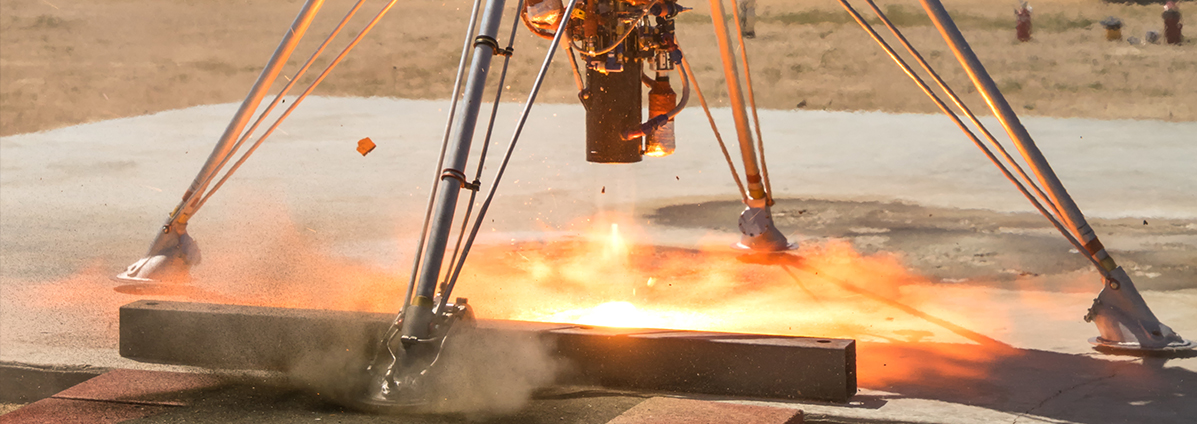
PlanetVac Successfully Tested on Sub-Orbital Xodiac Rocket
Pneumatic sampling system collects hundreds of grams of sample in simulated planetary landing
PlanetVac, a pneumatic planetary sampling system developed by Honeybee Robotics, reached a milestone with a successful sample collection demonstration on the Masten Space Systems Xodiac rocket. The test, part of NASA’s Flight Opportunities program, sought to prove that PlanetVac could survive and perform attached to the foot of a spacecraft, including withstanding intense heat, vibration, and landing loads of a rocket touch-down. By successfully gathering over 300 grams of regolith in a single operation from the surface of the Mojave desert, an analogous environment to Mars and the Moon, PlanetVac demonstrated its ability to gather materials for analysis in a simpler, more cost-effective manner than possible with a scoop or other traditional approaches to sampling.
PlanetVac is a highly flexible pneumatic sampling system that can be integrated into a range of spacecraft and mission architectures to collect surface samples from nearly any planetary body. In the simplest architecture, and the one used for the PlanetVac Xodiac tests, the sampler seamlessly replaces the foot of the lander, with almost no modification necessary for the rest of the spacecraft. When the rocket touches down, PlanetVac makes contact with the planetary surface. Compressed gas is injected into the sampler, which lofts material into a designated sample collection container or a scientific instrument, which can be right next to PlanetVac, or elsewhere on the spacecraft. The device uses only a single actuator to trigger the gas flow, greatly reducing complexity and risk for gathering surface samples.
“Honeybee has been developing the pneumatic-based PlanetVac sample acquisition and transfer system for over a decade, and the most recent successful test is a real milestone in terms of validating the concept and its reliability for a future flight,” said Kris Zacny, Director of Exploration Technologies Group, Honeybee Robotics. “We’re incredibly happy with the results. The sampling system worked exactly as intended, and we got more than three times the amount of material we had hoped to sample. This latest testing was only possible with the support of NASA, The Planetary Society, and our partners at Masten Space Systems.”
PlanetVac is suitable as a complement or backup sampling system for a range of landers to the Moon, Mars, or any other body covered in regolith. With low mass and minimal complexity, it can reduce the risks associated with surface sampling, and reliably collect soil using the type of pressurized gas often already onboard landing vehicles. Previously, the pneumatic system was successfully tested in a vacuum chamber at simulated lunar gravity (on zero-g airplane) and lifted 60 grams of JSC-1a lunar regolith simulant with just 10 milligrams of pressurized nitrogen gas.
Video of the tests and further documentation is available from The Planetary Society at http://www.planetary.org/explore/projects/planetvac/


